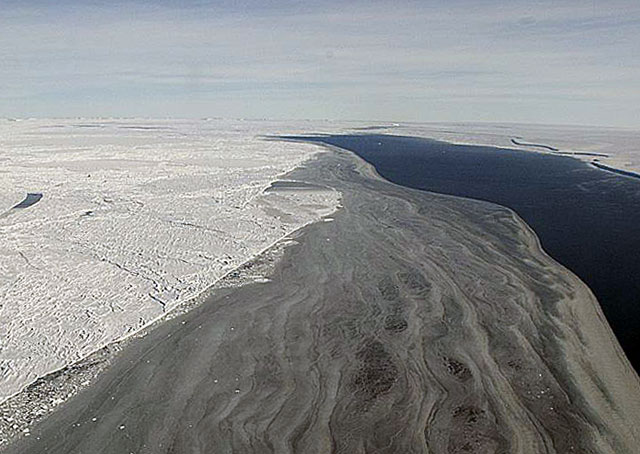|
Meeting of the mindsWest Antarctic puzzles bring together polar researchers at annual workshopPosted October 14, 2011
The West Antarctic Ice Sheet (WAIS) Initiative At the 18th annual WAIS Initiative workshop, held near Loveland, Colo., last month, it was apparent those questions are still at the forefront, but new technologies and techniques are bringing scientists ever closer to understanding Antarctica’s complex ice dynamics and its role in the global climate system. Ted Scambos “We still want to further underscore the value of multidisciplinary research into the West Antarctic Ice Sheet. It’s clear that things like atmosphere-ice and ocean-ice interactions are going to be key to understanding how it’s changed in the past, how it’s changing in the present, and what’s going to happen in the future,” said Scambos, lead scientist at Boulder’s National Snow and Ice Data Center (NSIDC) NSIDC hosted this year’s meeting, attended by nearly 100 glaciologists, geologists, meteorologists and other others, including many early-career scientists. The workshop, partly supported by the National Science Foundation’s Office of Polar Programs (OPP) 
Photo Credit: Peter Rejcek
Scientists at the WAIS Initiative workshop, held in Loveland, Colo., discuss their research during a poster session.
Several of the presentations ranged well outside the Antarctic, spanning the globe to Greenland, which is also undergoing dramatic changes, to places where one wouldn’t think to go in a meeting dedicated to ice and snow. “The tropics are a bigger player than we thought,” said Ryan Fogt Fogt has a grant “[The Antarctic is] connected to the rest of the globe,” observed Eric Steig His research with colleagues, published earlier this year in the journal Nature, suggests that rising sea surface temperatures in the area of the Pacific Ocean along the equator and near the International Date Line drive atmospheric circulation that has caused some of the largest shifts in Antarctic climate in recent decades. [See previous article: Heat wave.] There were the usual debates played out among such presentations: What exactly is causing the changes in the atmosphere above Antarctica that is strengthening westerly winds, which are drawing relatively warm circumpolar deep water (CDW) onto the continental shelf? Is it influenced by the tropics or ozone depletion in the stratosphere? Most everyone agrees that the CDW is responsible for weakening the ice shelves that hold back the glaciers from below. NASA “The objective still is quantifying the contributions to sea level from the West Antarctic Ice Sheet,” Bindschadler said during a discussion about the WAIS Initiative’s research priorities looking forward to the future.1 2 Next |



For USAP Participants |
For The Public |
For Researchers and EducatorsContact UsNational Science FoundationOffice of Polar Programs Geosciences Directorate 2415 Eisenhower Avenue, Suite W7100 Alexandria, VA 22314 Sign up for the NSF Office of Polar Programs newsletter and events. Feedback Form |


